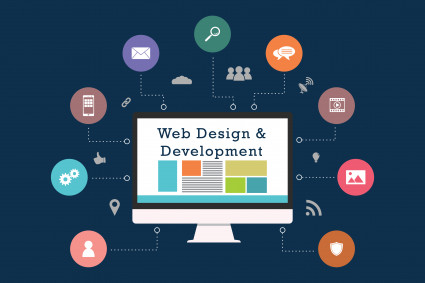In today's fast-paced digital world, a website is not just a luxury but a necessity for businesses and organisations of all sizes. It serves as your virtual storefront, representing your brand, products, and services to a vast online audience. A well-designed and functional website can be a powerful tool for attracting customers, generating leads, and establishing credibility. However, as technology advances and user expectations evolve, they can quickly become outdated, ineffective, and even detrimental to your online presence, which is why it is important to have the support of an experienced web development company in Sri Lanka, on your side.
If you are wondering whether it is time to give your website a much-needed makeover, this article will highlight the top ten signs that indicate you need a new one. From design and functionality issues to poor user experience and outdated content management systems, these signs will help you identify the areas where it may be falling short. By addressing these issues and investing in a new website through a company that offers web development services and mobile application development, you can breathe new life into your online presence, connect with your target audience more effectively, and stay ahead of the competition.
Outdated Design.
One of the most obvious signs that your website needs a revamp is an outdated design. If it looks like it is stuck in the early 2000s with clashing colours, pixelated images, and confusing navigation, it is time for a change. Modern design trends prioritise clean layouts, intuitive navigation, and visually appealing aesthetics to provide visitors with a pleasant browsing experience.
Slow Loading speed
Users have little patience for slow-loading websites. If it takes more than a few seconds to load, you are likely to lose visitors and potential customers. Slow loading speeds can be caused by various factors, such as excessive animations, large image files, or outdated coding. It can be optimised for speed, ensuring that users can access your content quickly and efficiently.
Non-Responsive or Mobile-Unfriendly.
With the increasing use of smartphones and tablets, having a mobile-friendly website is no longer optional—it is a necessity. If it is not responsive, meaning it doesn't adapt to different screen sizes, you are missing out on a significant portion of your potential audience. It can be designed with a responsive layout, providing an optimal viewing experience across all devices.
Poor User Experience.
User experience (UX) plays a vital role in the success of a website. If visitors find it challenging to navigate, locate information, or complete desired actions (such as making a purchase or filling out a form), they are likely to leave and never return. It can be designed with a user-centric approach, focusing on intuitive navigation, clear calls to action, and streamlined processes to enhance the overall user experience.
Low Search Engine Rankings.
If your website is struggling to appear in search engine results, it is a clear sign that it needs improvement. An outdated page may lack the necessary optimisation elements, such as meta tags, proper header structure, and relevant keywords, which can impact its search engine rankings. It can be built with search engine optimisation (SEO) in mind, increasing its visibility and organic traffic.
High Bounce Rate.
A high bounce rate refers to the percentage of visitors who leave your website after viewing only one page. If your bounce rate is consistently high, it indicates that visitors are not finding what they are looking for or that your website fails to engage them. It can address these issues by presenting compelling content, improving the structure, and creating clear pathways for users to explore further.
Outdated Content Management System (CMS).
An outdated content management system can limit your functionality and hinder your ability to update and manage content effectively. If you find it challenging to make changes to your website, add new pages, or integrate third-party tools, it is time to consider a new CMS. Upgrading to a modern and user-friendly CMS will provide you with greater control and flexibility over your content and features.
Lack of Integration with social media.
Social media has become an integral part of marketing and branding strategies for businesses. If it lacks integration with social media platforms, such as sharing buttons or embedded feeds, you are missing out on valuable opportunities to engage and expand your audience. A new website can seamlessly incorporate social media elements, allowing visitors to easily connect and share your content.
Poor Conversion Rates.
Ultimately, the success of a website lies in its ability to convert visitors into customers or clients. If your website is not generating the desired conversions, whether sales, leads, or sign-ups, it may be time for a redesign. It can be optimised for conversions through the strategic placement of call-to-action buttons, clear product and service descriptions, persuasive landing pages, and simplified checkout processes.
Lack of Integration with analytics.
Without the ability to measure and analyse your performance, it is challenging to make informed decisions and improvements. If your current website lacks integration with analytics tools like Google Analytics, you are missing out on valuable insights into your visitors' behaviour, traffic sources, and conversions. It can be built with analytics integration, enabling you to track and measure key metrics for continuous improvement.
In conclusion, a website serves as the digital face of your business or organisation. If you are experiencing any of the ten signs mentioned above—an outdated design, slow loading speed, non-responsiveness, poor user experience, low search engine rankings, high bounce rate, outdated CMS, lack of social media integration, poor conversion rates, or lack of analytics integration—it is time to consider investing in a new website. By doing so, you can enhance your online presence, attract more visitors, and achieve your business goals in today's competitive digital landscape.


